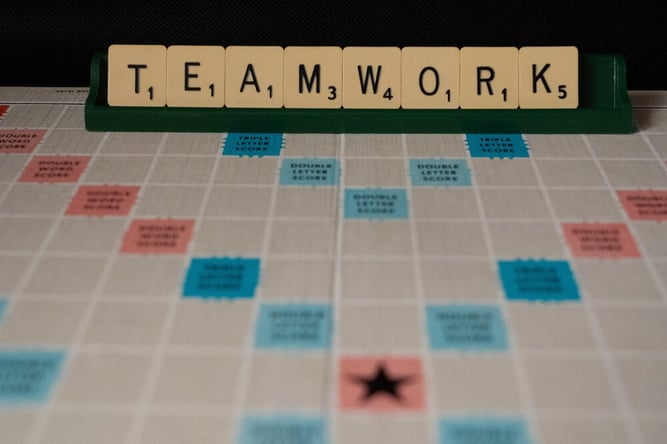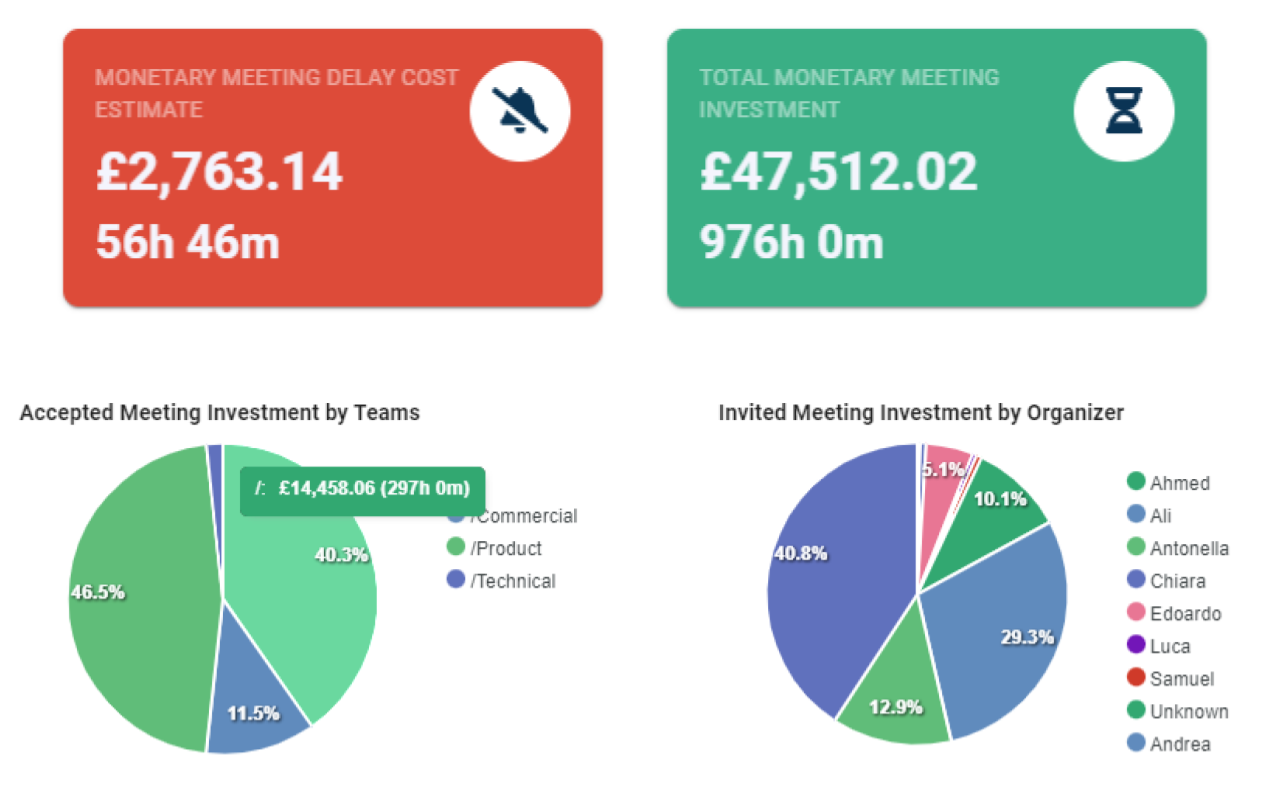Every business wants to be more productive. Improving organizational productivity and increasing team productivity drives efficiency, and ultimately determines the success of the organization.
In this article we will look at 5 essential habits which are traits of effective teamwork and high levels of organizational productivity:
- Deep Work Routine
- Productive Meeting Culture
- Better Organizational Alignment
- Identify and Break Down Information Silos
- Data-Driven Decision Making
Background to Organizational Productivity
Over the last 20 years I have worked with a lot of leadership teams, in every instance ‘employee productivity’ is a topic of discussion, and in every instance previous initiatives to improve employee productivity had not delivered the expected results. There are several ways to boost productivity, but if we explicitly discuss the workforce productivity, we need to put our focus beyond individual employees.
A recent study by Hubspot revealed that low productivity costs employers around USD 1.8 billion dollars annually.
But this doesn’t really scratch the surface, the actual impact of low productivity becomes much greater when you also combine factors such as poor quality and unproductive meetings, lack of deep work time, poor team communication, slow decision making, information silos and poor cross-functional alignment.
Whether your organization has adopted full remote working or you are implementing a hybrid working strategy, our 5 essential habits for teamwork and productivity will keep your business on track and provide better business outcomes.
Why is Improving Teamwork and Productivity Important?
The vast majority of these leadership teams were trying to tackle employee productivity challenges from the employee perspective, before considering the teamwork or organizational productivity factors.
Improving productivity is typically less about individual employee productivity and more about the team productivity as a collective, and identifying blockers which hinder productive at an organization level.
All too often, leadership teams decide that the solution to increase employee productivity is to get HR to facilitate time management training courses.
First off, you have probably just caused an employee disengagement problem, and secondly I would argue that time management training barely tackles a symptom of poor productivity let alone addresses the root cause of productivity challenges.
Given that people are overwhelmed by work more now than ever, buried in email and continually distracted by instant notifications, unable to focus on critical priorities due to lack of deep work time, it’s safe to say that traditional productivity hacks just don’t hack it.
Due to remote and hybrid work it is also fair to say we work in more complex organizations which are more defined by digital communication and collaboration among teams — and it’s often these digital inter-dependencies that have the greatest impact on organizational productivity.
In his book, "Out of the Crisis", W. Edwards Deming argued, 94% of most problems and possibilities for improvement belong to the system, not the individual.
And this rings true for productivity. When you tackle productivity challenges first at the organizational level, then at the team productivity level, you create organic improvements for individual employee productivity.

5 Essential Habits of Productive Teamwork
Here are 5 essential habits of teamwork and organizational productivity that will help your organization and answer the question of how to improve business productivity:
Habit 1 - Deep Work Routine
There are many benefits of deep work (also known as Focus Time). As part of your organizational productivity strategy, deep work time should be at the forefront of your focus. The amount of Deep work vs Shallow work will either increase your business performance, or impact your growth potential.
Highly productive teams share a trait of consistent deep work routines, this doesn’t mean all employees are working for 8 hours per day uninterrupted, but it does mean that teams and employees consistently schedule 60-180 minute sessions where distractions are removed, tasks are prioritized and deadlines are achieved more often.
How does deep work time relate to organizational productivity? A second trait of effective teamwork and productivity is that most of the organizations they work within have a culture that enables deep work time. In simple terms it means that the leadership teams and team managers take pro-active steps to remove blockers at an organizational level which impact deep work time.
For example, if your company is using Slack, a quick productivity win would be to start implementing some of the Slack best practices and for example inform your teams about Slack response time expectations. Just because you receive an instant message, it doesn’t mean that your culture should make it acceptable that people feel under pressure to instantly reply.
Deep work time is a comprehensive subject, you can read more about methods to improve deep work time here.
Habit 2 - Productive Meeting Culture
The amount of time we all spend in meetings has been steadily rising over the last decade, research shows that ‘unproductive meetings’ is now one of the biggest causes for employee disengagement. It should be no surprise that your meeting culture and organizational productivity are interlinked, but still unproductive meetings impact our daily work lives.
It is now estimated that the average employee spends 21% of their time in meetings with 47% of employees stating that more than half of meetings were unproductive.
More recently, company meetings have become more complex, managing productive remote and hybrid meetings presents its challenges. But the basic fundamentals for running productive meetings remain the same, and by improving your productive meeting culture will in turn positively effect other areas of organizational productivity.
At Flowtrace we benchmark our clients, recent results showed in over 90% of companies who received high employee survey feedback scores in relation to ‘productive meeting culture’ the correlation showed higher levels of average deep work time per employee.
We have written a handy Meeting Best Practice Guide to help make your in-person, remote and hybrid meetings more productive.
Habit 3 - Organizational Alignment
The definition of organizational alignment is the process of creating harmony between the company’s ultimate vision of success and the way leaders, teams and individual contributors drive business results.
Organizational alignment or cross-functional alignment focuses the importance of teamwork, communication and collaboration. Organizational alignment ensures that every member of the company is on the same page in regard to short-term and long-term business objectives.
When teams are aligned to one another they become productive:
- their task and process handovers become more efficient,
- overall work gets done faster,
- less mistakes are made,
- more calculated risks are taken,
- decisions are faster and more accurate,
- objectives are achieved more consistently,
- and better business outcomes are achieved.
Companies which thrive on productive teamwork typically share the same trait of efficient and effective cross-team collaboration. You can read more about how to improve cross-team collaboration here.

Habit 4 - Break Down Information Silos
Information silos (or organizational silos) is a term which describes the isolation that occurs when employees or entire departments within an organization do not want to, or do not have the adequate means to share information or knowledge with each other.
Siloed teams often end up working in isolation from the rest of the company, leading to a myriad of internal and external problems.
Companies which have the best teamwork and organizational productivity typically take a focused approach to identifying and breaking down information silos.
This focused approach enables teams and individuals to find important company information quicker. It also helps to onboard new hires more efficiently, as information is more accessible.
You can read more about how to identify and break down silos here.
Habit 5 - Data-Driven Decision Making
Every organization has to make decisions which define objectives, goals and business performance.
Some decisions can be simple, however making strategic decisions that impact the direction of business performance are more difficult to make, and more impacted by personal bias when solely reliant on intuition.
Companies with high levels of strategic decision making typically take a data-driven approach to understanding the interaction of decisions and their impact upon the organization.

Decision intelligence is fast becoming a more wisely used term, whereas business intelligence is more commonly associated to large enterprises, decision intelligence has more relevancy to every size of business.
In simple terms, decision intelligence is a process of using AI and Machine Learning to improve the decision making process.
Although human validation for most strategic decision making will still be needed, decision intelligence can support the workload by analyzing and presenting data from multiple sources quickly and efficiently.
You can read more about why decision intelligence plays an important role for organizations here.
Reveal the Habits with Flowtrace
Smart organizations take advantage of smart insights. Find out more about how we are help our clients unlock the power of productivity, meeting, collaboration and engagement solutions.
If you would like to see our insights in action, you can view our plans or schedule in a discovery call and we will happily give you a tour of our platform.
